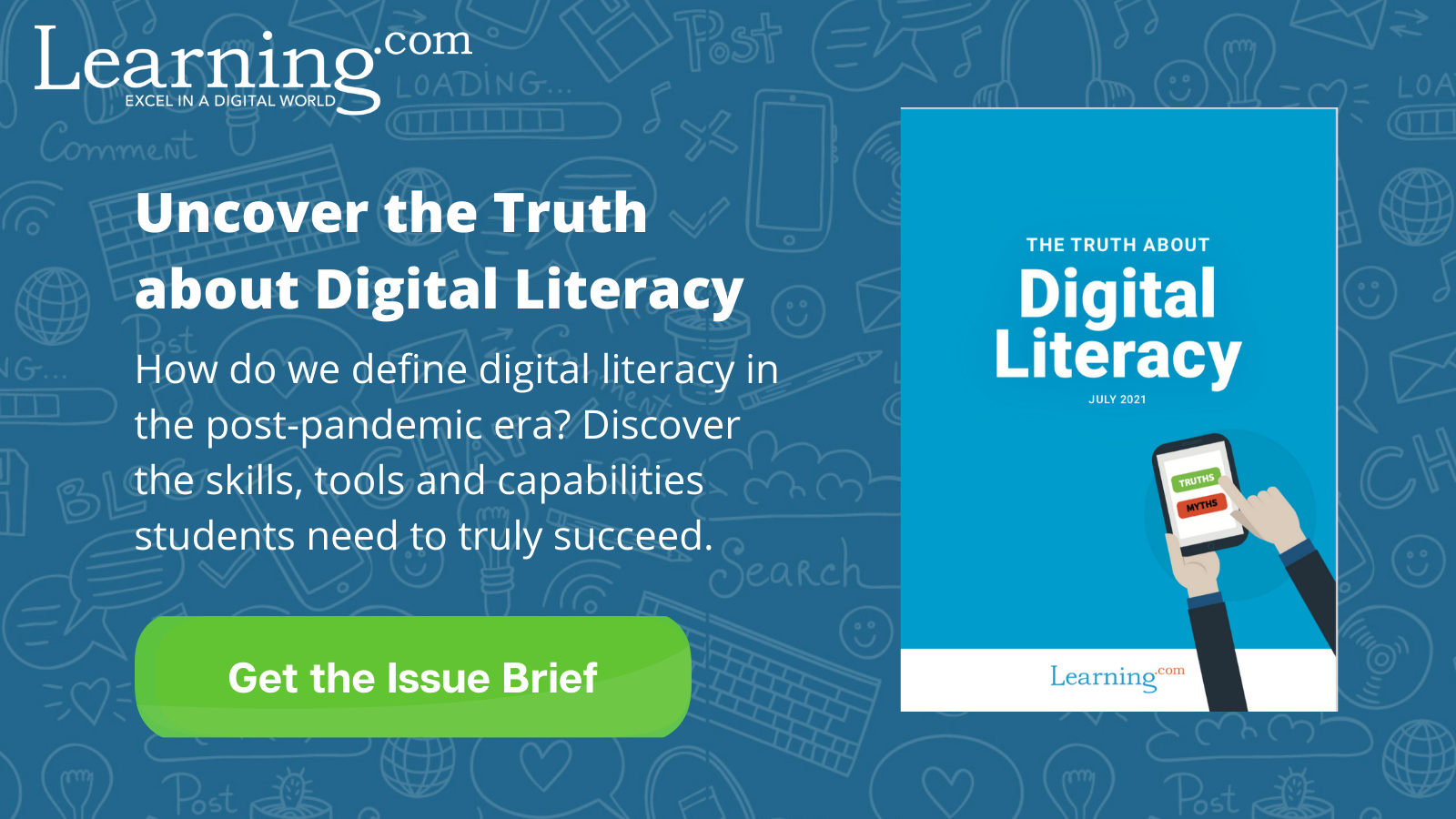Which digital skills are essential for digital literacy? And in an era when most kids have been clicking and swiping at devices almost since birth, which digital skills actually need to be taught in the classroom? In our new white paper, The Truth about Digital Literacy, we propose a clear definition of digital literacy:
The ability to safely use, understand, communicate and create with technology, media and digital resources in real-world situations.
Take a deeper dive into the five essential kinds of skills that comprise digital literacy: knowing how to use devices, creating with tools and apps, being a good digital citizen, leveraging the power of the internet, and understanding coding and computational thinking. Plus, get concrete examples of how students can demonstrate proficiency in each of these areas.
With a shared understanding of the concept, we aim to advance the conversation around digital literacy that’s essential to students’ future success, while also ensuring digital equity in schools.

Christine Byrd
Author at Learning.com
Christine has over 17 years of experience as an award-winning writer, thorough researcher, detail-oriented editor, and communications strategist. She specializes in providing internal and external communications for corporate, academic and nonprofit leaders.
Further Reading
Boundaries to Support a Positive Relationship with Technology
Healthy technology boundaries are essential to maintaining a balanced relationship with digital devices and the internet. These boundaries help...
How Texas Schools Are Integrating the TA-TEKS
Exciting developments are on the horizon for K-8 schools across Texas as they gear up to implement the new Technology Application TEKS...
K-12 Online Safety: Understanding and Mitigating Online Risks for Students
In the digital age, the internet is an integral part of students' lives, offering endless resources for learning, entertainment and social...





